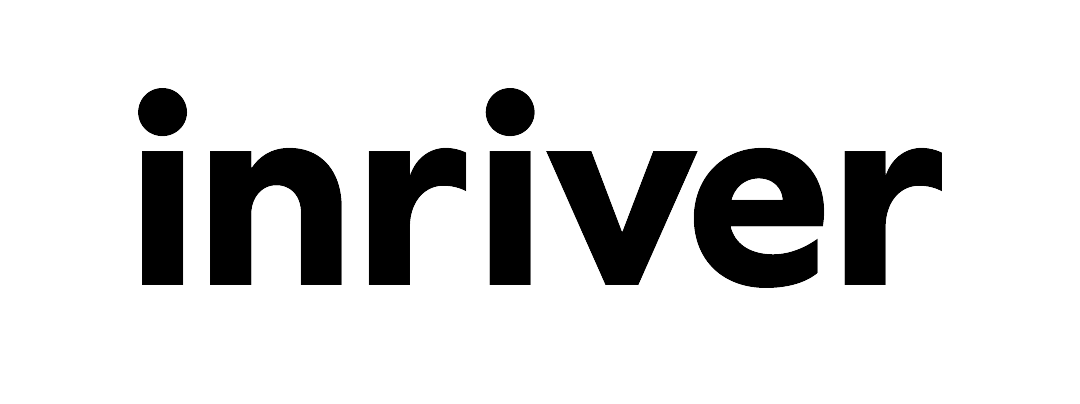Compare E-Commerce models.
Our scoring process is applied and objectively evaluated according to strengths and weaknesses.
Compare vendors based on the five dimensions of the Composable Agility Score. Freely choose the solutions you want to compare to get an easy overview of their capabilities. You can adjust your selection at any time or click on any solution to read a more detailed explanation of their CA Score.
A vendor must first be removed before another one can be added for a comparison.
How easy is it to quickly and scalably build the individual solutions you need for your business using the application? See also: Best of Breed versus Best of Suite.
How well can a cloud application be broken down into its individual parts and used? The best solutions can be combined based on specific customer requirements.
How well can this application be connected and controlled via standardized applications? A functional API interface is able to interact with any other software.
How natively can this application be operated in the cloud (updates, backup, porting)? An ideal cloud solution is available everywhere, accessible at any time, highly secure, flexible and agile.
How independent can the application be from the end user’s interface (desktop, mobile, on the go…)? A functional solution is able to operate with any frontend.





BigCommerce is an Open SaaS e-commerce platform for B2B and B2C retailers. Founded in 2009 in Sydney, Australia, BigCommerce is currently headquartered in Austin, Texas, USA. As of August 2020, BigCommerce is a NASDAQ-listed company. BigCommerce offers four pricing plans; Standard, Plus, Pro, and Enterprise. In order to fully assess its capabilities, this evaluation is based on their Enterprise plan.
Founded in 2007 and headquartered in Malmo, Sweden, inriver has celebrated many milestones since their inception. Today, they have over 600 customers and 300 employees worldwide. Inriver offices are located in major global cities, including Chicago, Amsterdam, Berlin, London, Stockholm, and Manila.
Their technological developments over the years have also been recognized, with Microsoft Azure awarding inriver Partner of the Year in 2019.
Their technological developments over the years have also been recognized, with Microsoft Azure awarding inriver Partner of the Year in 2019.
Salesforce offers companies feature-packed solutions with a focus on powerful AI. While they offer a comprehensive e-commerce solution with their Commerce Cloud, they still have some catching up to do when it comes to some of the interfaces. For example, microservices are being introduced, but are not yet ubiquitous.
Headquartered in Boston, USA, Salsify has grown from strength to strength since its inception in 2012. Securing a Series F funding round in April 2022, Salsify’s total funding to date amounts to $452.6 million. Overall Salsify has had 12 investors, including Permira and TPG.
Focusing largely on allowing their customers to gain success on the “digital shelf”, Forrester’s Q2 2021 PIM Wave named Salsify a leader and a “visionary and fast mover in the PIM space and commerce.”
Focusing largely on allowing their customers to gain success on the “digital shelf”, Forrester’s Q2 2021 PIM Wave named Salsify a leader and a “visionary and fast mover in the PIM space and commerce.”
Spryker offers a fully modular digital commerce platform for B2B and B2C, as well as Enterprise Marketplace capabilities. Spryker was founded in 2014 in Berlin, Germany, and raised over $130 million in a Series C funding, led by Silicon Valley-based TCV in December 2020. According to Gartner®, Spryker is the fastest growing vendor in the 2021 Magic Quadrant™ for Digital Commerce.
7.0
5.8Composability
8Head-
less
less
8.7Cloud
Native
Native
7API
5.3Modu-
larity
larity
7.4
6.9Composability
6.3Head-
less
less
9.8Cloud
Native
Native
6.2API
8Modu-
larity
larity
6.1
5.8Composability
6.5Head-
less
less
7Cloud
Native
Native
7.3API
3.9Modu-
larity
larity
8.1
6.9Composability
6.8Head-
less
less
9.8Cloud
Native
Native
8.5API
8.5Modu-
larity
larity
8.6
9.1Composability
8.7Head-
less
less
8.7Cloud
Native
Native
8.9API
7.7Modu-
larity
larity
Modularity
5.3
8
3.9
8.5
7.7
BigCommerce began operations as a monolithic platform, although in recent years it has focused more on a modular system/microservices. As BigCommerce is a SaaS platform, customers do not consume or interact with microservices directly. Instead, these are utilized behind the scenes for easier customer implementation.
Although inriver does not refer to microservices on their site, they do reference the many integrations available through their product. This “Integration Framework” allows customers to take inriver components and build new integrations and adapters. Integrations available include a range of commerce providers and PIM optimizers, among others.
The Salesforce Solution is not based on a modular system/microservices. It’s a monolith that is making an effort to modernize its offerings—which doesn’t change the origins and nature of its core architecture.
In 2016, Salsify announced on their blog they were moving towards a Microservices architecture. Although they now speak of this very little on their own site and documentation, Salsify’s platform is created as a set of microservices. In 2018, Salsify co-founder and CMO Rob Gonzales wrote of how the company had broken up its original monolithic platform and converted it into containerized microservices. New features were then built as separate projects.
Spryker’s architecture is based on a modular system/microservices, even though the products they offer focus on capabilities which are essentially bundles of microservices. Based on Gartner’s Packaged Business Capability (PBC) paradigm, this approach results in a less granular segmentation than microservices would offer, but reduces complexity and makes the deployment simpler. Services can be deployed independently and customized if needed.
API
7
6.2
7.3
8.5
8.9
APIs via BigCommerce cover most use cases, but don’t offer full customizability. There are some areas where BigCommerce does not offer API coverage; however, because it is an Open SaaS platform, API coverage is fairly extensive.
Inriver is not API first, but includes APIs in some cases. Inriver’s community webpages include documents for developers in relation to their REST API, which launched in 2019, however, their documentation is more limited than that of other providers.
With Salesforce, pre-configured API connections to 3rd party apps (e.g. ERP systems, inventory systems, accounting systems etc.) are not available. Due to their acquisition of the API platform Mulesoft and their very own tech infrastructure, Salesforce offers several APIs. Most are REST standard.
Salsify’s website offers a comprehensive API (Salsify Supplier Experience Management API Documentation) and webhook guide (Salsify Product Experience Management Developer Hub). Salsify supports both REST & GraphQL APIs. Salsify’s in-house team works directly with retailers to guide the creations of APIs. Some of the API integrations Salsify offers includes Accenture, Adobe, and Walmart.
Spryker is an API first solution with an exceptionally high coverage of functions via APIs. The Spryker “GLUE API” adheres to all modern quality and security standards, and supports versioning as well as different output types. High-code customizations and low-code configuration are available.
Cloud Native
8.7
9.8
7
9.8
8.7
Being an Open Saas platform, BigCommerce scores highest for being cloud native.
Multi-tenant SaaS solution, which means it is completely scalable. Inriver utilizes Microsoft Azure as its cloud provider.
Salesforce offers a cloud-native solution. It mainly uses AWS and offers a very solid infrastructure. Updates can be done seamlessly for end-users, although there can be issues with elasticity, e.g. scalability.
Salsify is a completely cloud-based SaaS platform, compliant with SOC 2 Type 2, meaning customers can host all of their product data and information on the cloud and not on their own internal servers. New or updated functionalities are updated quickly with no downtime. Salsify has been a multi-tenant solution since its inception and offers no single-tenant option. Salsify’s utilization of cloud services provides adequate scalability for companies experiencing growth.
Spryker started as a purely on-premise solution, but shifted entirely to a cloud-native approach. The Spryker Cloud Commerce OS is a platform-as-a-service (PaaS) solution mainly deployed on AWS, but Azure and Google Cloud Platform are possible as well. Updates are automated for continuous deployment.
Composability
5.8
6.9
5.8
6.9
9.1
Although some aspects of the BigCommerce platform lend themselves well to scalability, composability is not something that was originally built into BigCommerce’s offering.
Although several blog posts from inriver show the provider’s understanding of composability and its importance in businesses of the future, the vendor itself does not mention much on its site regarding its own steps towards composability. However, their integrations and cloud native services are clearly a step towards creating a composable product.
For functionality beyond standard integrations, additional coding is required. All customizations must be done in collaboration with existing features e.g. those delivered by salesforce.
Offering several customizable options, Salsify is, to a degree, a composable platform. Salisfy themselves, however, do not refer to themselves as composable, nor refer to many of their features as composable, specifically.
The Spryker Cloud Commerce OS is a modular system following the best of breed approach with a decent-sized and rapidly growing ecosystem of partners. On a business level, Spryker’s App Composition Platform is particularly powerful, enabling one-click integration of technology partners. On a technical level, Spryker provides a considerable number of Software Development Kits (SDK) as building blocks to simplify the development of new integrations, as well as high-, low- and no-code customizations.
Headless
8
6.3
6.5
6.8
8.7
BigCommerce scores well for Headless overall, with its presentation layer decoupled from the front-end commerce engine. Partly because it has incorporated so many APIs, BigCommerce can be seen as a truly headless solution.
Inriver uses connections via third-party providers to offer headless experiences. The inriver Integration Framework (IIF) allows for extensions with other providers to create a headless set up.
Salesforce is not headless; backend and frontend are not decoupled. Therefore, it allows you to work with a page designer solution, which is designed to give merchants more control over templates and content. It comes with a powerful AI-powered personalization feature and, thanks to the acquisition of the PWA service Mobify, it also delivers an out-of-the-box PWA platform. Salesforce does expose APIs and offers a headless CMS, but that didn’t change the underlying architecture of the core platform. It is still not microservice-based.
In December 2020, Salsify launched its Commerce Experience Management (CommerceXM) platform. CommerceXM allows customers to optimize a growing number of digital touchpoints, including IoT devices, messenger apps, and voice enabled assistants.
Spryker is a truly headless solution and optimized to be used in multi- and omnichannel setups. It provides a strong out-of-the-box frontend that lacks some personalization capabilities in Spryker’s own CMS, but the flexibility in terms of customizations and third party integrations is very high.
Bottomline
7.0
7.4
6.1
8.1
8.6
As an Open SaaS platform, BigCommerce scores highest for being cloud native. This means that customers benefit from automatic and seamless updates. However, BigCommerce scores lowest for microservices. Although microservices are available, neither developers nor users can interact with them directly. BigCommerce also does not score highly in composability, since it was originally created as a monolithic platform. Although they are adding additional microservices to their offering and their headless options offer a certain level of decoupling and flexibility, improvements in this area will help to create a modern, flexible e-commerce experience.
Inriver is taking many steps towards modernizing its offering. However, it is not the most advanced provider out there when looking at the benchmarks above particularly available microservices and APIs.
Salesforce offers a robust solution with some unique functionality like powerful AI. Due to the many acquisitions, it feels a bit patched together — they mean that ecommerce is not Salesforce’s main area of focus. Salesforce is known as a global company and benefits from other Salesforce acquisitions and products. As one of the largest known monoliths, Salesforce is trying to modernize step by step especially with regards to microservices.
Having previously been a monolithic platform broken down into microservices and modules, Salsify offers much flexibility to customers. In addition, Salsify’s extensive API documentation and integrations allow customers to utilize a vast number of connections, including those which contribute to Salsify’s headless offering. With no downtime for upgrades and no hardware integrations to use their platform, Salsify could be described as cloud native, with this also offering exceptional advantages to companies looking to scale.
Spryker is a leader in the Cloud Agility Score with a special focus on composability via its App Composition Platform and the use of Packaged Business Capabilities. The latter feature makes microservices Spryker’s lowest subscore—at an overall very high level. The Spryker Cloud Commerce OS is headless throughout, offers nearly comprehensive high-quality API coverage, and is deployed natively on leading cloud hosting providers.
FAQ
What is BigCommerce?
BigCommerce is a NASDAQ-listed e-commerce platform provided as software-as-a-service for retailers. The company’s platform includes online store creation, search engine optimization, hosting, marketing, and security for businesses of all sizes.
Who uses BigCommerce?
Tens of thousands of B2B and B2C companies across 150 countries and numerous industries use BigCommerce to create beautiful, engaging online stores, including Ben & Jerry’s, Molton Brown, S.C. Johnson, Skullcandy, Sony, Vodafone and Woolrich.
Is BigCommerce good for e-commerce?
BigCommerce is a renowned e-commerce builder, providing high scalability for online stores. It has more built-in sales tools than most of its competitors, and combines these features with SEO and multi-channel integration.
What code does BigCommerce use?
BigCommerce uses programming languages like PHP, Python, Java, and Ruby. BigCommerces default presentation framework is SCSS Framework Citadel, which is built on top of Foundation v5. 5.3 (Foundation v6. x not currently supported).
Is Big Commerce free?
BigCommerce free plan can be selected for a period of one month from the date of activation (the “Offer”). The free Offer period applies only to base monthly subscription fees and does not apply to other services or products. After one month you need to upgrade to a subscription plan.
What is Salesforce?
Salesforce is a cloud computing software as a service (SaaS) company that specializes in customer relationship management (CRM). The software has become the number one for customer success and helps businesses track customer activity, market to customers and many more services.
What does Salesforce do/offer?
Salesforce lets you efficiently unify different principal functions of your business so you can achieve customer success. You can sell, provide service, market, collaborate, know your customers, and build apps on a single platform.
How does Salesforce architecture work?
Salesforce has a multilayer architecture; it contains a series of layers situated on top of each other. In the multilayer Salesforce architecture, the users are at the topmost layer.
Does Salesforce store data in a cloud?
Salesforce is a cloud platform and hence all the data stored in Salesforce is stored in cloud. Like Google, AWS and Microsoft, Salesforce has multiple data centers across the globe where this data is actually stored. All of these data is stored at multiple locations for easy accessibility and backup purpose which means that each record that is created in Salesforce is stored at muliple data centers across the globe.
Is Salesforce free?
Salesforce does not offer a free version of their software, so users have to choose between the different pricing plans.
What is Spryker?
Spryker is a commerce platform with a full suite of e-commerce tools which enables companies to create sophisticated, transactional business models in B2B, Enterprise Marketplaces, Unified Commerce and B2C.
What does Spryker do/offer?
The Spryker Cloud Commerce OS is a composable platform-as-a-service (PaaS) solution with headless & API-based architecture. Enterprises from all industries can use Spryker to innovate and differentiate their digital commerce business.
Is Spryker headless?
Spryker ‘s architecture is headless, the business logic and backend are decoupled from the customer-facing frontend. Spryker enables headless commerce solutions and is optimized to be used in multi- and omnichannel setups.
What is Spryker Marketplace?
Spryker’s commerce platform provides B2B, B2C, D2C, and Marketplace capabilities in one stack. That means that Spryker customers can build their own marketplaces in the Spryker Cloud Commerce OS.
Is Spryker free?
Spryker is no open source solution and does not offer the option of a free trial.







